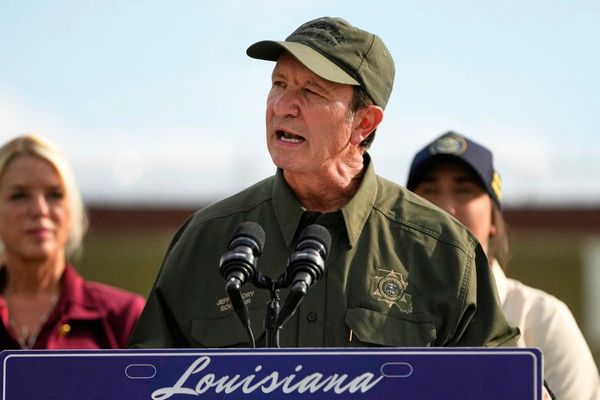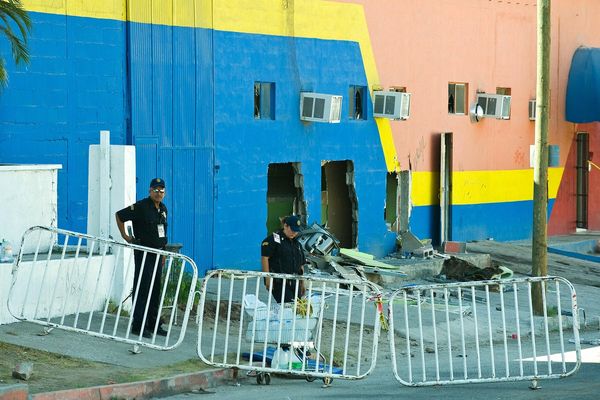
Splash! There’s a ripple on the water and I grapple with my camera to focus on the river. An otter-sized ripple is radiating out across the current. But it turns out to be from a fluorescent stick that’s been tossed into the river and is now being chased by a swimming dog. I lower my camera. Even at 7am, dog-walkers are a ubiquitous hazard for anyone wanting to capture British wildlife.
In another life, perhaps I would have had a double-barrelled surname and swaggered across the savannah in khaki, paying off my mortgage with a single photograph of a lion mauling a wildebeest. It’s never too late to pursue your dreams, though – and that’s why I’m hunched by a Suffolk riverbank with a malfunctioning camera, failing to photograph an otter and instead capturing a blurry image of a dog.
I’m getting tips from David Tipling, who is not a posh savannah-swaggering type, but an acclaimed photographer who has travelled the world in pursuit of rare birds. Tipling also offers one-to-one tuition, and close encounters with real wildlife. We meet at 7am by the River Little Ouse in Suffolk to look for otters. Tipling keeps it simple: with tiny binoculars around his neck and a Nikon with a 600mm telephoto zoom, he moves unusually quietly through the countryside. Fieldcraft, as well as technical know-how, is essential in wildlife photography – and few of us have it since we don’t spend enough time outdoors. “I call it the three Ps,” says Tipling. “You need patience, perseverance and planning. If you’re at the wrong time of day, or wrong time of year, you’ll miss the wildlife.”

Otters hunt by swimming fairly slowly upstream, Tipling explains. While there’s only a 50/50 chance of finding one, once you do they are surprisingly easy to follow, providing you move quickly ahead the moment they dive underwater.
The elusiveness of most creatures is one reason why many keen photographers go on a course with a professional. Tipling may have travelled the world taking shots to illustrate Birds & People, Mark Cocker’s majesterial book from 2013, but he also knows exactly where to find a barn owl in Norfolk, and he has a special trick (I could tell you, but then I’d have to kill you) to get close to wild hares.
Unfortunately, even Tipling fails to turn up any otters during two hours of lovely riverside walking. We do enjoy seeing five kingfishers darting across the water, however. But these are gone in a flash – even Tipling doesn’t attempt to photograph them.

Have you ever admired a lovely shot of a kingfisher perched on a bare branch, silver fish in beak? Well, it was almost certainly set up. To photograph a kingfisher, Tipling says, you need to prepare a riverside branch, removing other branches so there’s no visual clutter, then build a shelter to conceal yourself. You may also need bait.
In fact, many amazing wildlife shots are created with a surprising amount of human intervention. So for our next lesson, we head to a Norfolk wood where Tipling has built a hide with special one-way glass imported from Barcelona. With the help of a feeder cleverly concealed behind an old oak stump, he has photographed sparrowhawks, green and greater-spotted woodpeckers, rare woodcocks and dozens of forest birds, not to mention stoats, squirrels, badgers, buzzards and red kites.
We sit, concealed, on comfortable chairs and talk technology. Keen amateurs are sometimes said to have “all the gear and no idea”. I’ve just got no idea. In the decade since I bought a basic Canon digital single-lens reflex (one of those “proper” cameras where you look through the lens to take a shot) I’ve specialised in mediocre pictures on automatic settings. I don’t know what half my camera buttons do.

While digiscoping – hooking a camera phone to a telescope with the help of a simple adaptor – is a big trend, Tipling prefers traditional technology. “There’s no substitute in photography for spending money, unfortunately,” he says. Many keen amateurs purchase a basic telescopic zoom lens for £1,000. But there is secondhand kit and it’s possible to innovate cheaply: for his aerial work, instead of a drone Tipling attaches a £150 camera to a kite.
The big revelation is to be shown features my own camera has that I never knew existed. There’s a “depth of field” preview button so I can see what will be in focus before I take a shot. Tipling explains white balance (just keep it set to automatic), quiet shutter mode (a normal shutter click can spook a barn owl – Tipling recommends allowing a barn owl to fly as close as possible before taking that first photo) and the importance of technicalities such as Adobe RGB (the amount of colour information stored on a picture file). We also change my ISO setting from 100 to 800, which enables faster shutter speeds in lower light to better freeze movement.
We examine a photo of a swan I took that morning. My automatic light settings overexposed the white bird against the dark water. Relying on automatic settings is too crude for most wildlife photography: Tipling sets his shutter speed and aperture manually. If I had done the same, I could have underexposed the photograph, making it darker, and thereby revealing the beautiful detail of the swan’s feathers.


Tipling demonstrates how to quickly change shutter speeds and aperture scales manually – and how this relates to wildlife. The quicker the shutter speed, the more sharply a camera captures movement: 1/1,000th of a second should be enough for a moving bird wing, although big flappy birds such as herons can be photographed in flight at lower speeds. The aperture (f2.8 to f22 on most cameras) sets the depth of field, or how much is in focus (f22 gives the deepest focus but lets in least light). Because Britain is often gloomy, you usually need a low f-stop.
This is no bad thing for wildlife photography, though, because a shallow depth of field blurs the background and isolates the subject – just what we want. Novices are often so focused on their quarry, they don’t pay any attention to what’s behind it. Avoiding placing background tree branches through the head of a bird in the foreground is harder than it sounds. And even if you blur out what’s behind, patches of light can still distract the eye. “I keep backgrounds as clean as possible,” says Tipling.

Meanwhile, I snap away at blue tits and great tits, miss a shrew and get a blurry squirrel. While this is unspectacular, it’s a revelation to be so close to nature. I’ve sometimes wondered if photographers rather miss the joy of wildlife because they are too busy fiddling with technology, but I find myself actually observing and noticing more – the peachy hue of a coal tit; the surprising grace of a female chaffinch.
In the afternoon, we head to one of southern Britain’s wildest, most people-free landscapes: the wide open salt marshes of the north Norfolk coast. Tipling has checked the tides and we jump creeks and walk a mile across flat sand. On a distant bank lie more than 100 grey and common seals. “The biggest photographic challenge here is to make order out of chaos,” says Tipling. “You’ve got a chaotic jumble of bodies lying across the sand and you’re trying to create a picture that takes away that chaos and gives some sort of impact. You’ve got to get in reasonably tight, otherwise you lose the impact of the seals looking at you.”
We also have a “fieldcraft” challenge: getting closer without disturbing them. “Low and slow” is Tipling’s mantra, and we approach a group of a dozen seals, extremely slowly and at a zig-zagging angle, as if we might be walking past them. I disapprove of disturbing wildlife but by using this approach, which takes a full hour, we get astonishingly close – and the seals are undisturbed. Tipling advises me to shoot at seal’s eye-level to create a more intimate picture, slowly shifting position to squeeze out distracting lumps of other seals in the background.
After a couple of hours, we quietly leave these beautiful beasts. I’m glowing from a day outside, from my close encounters with wildlife, and from finally understanding what I can achieve with all those different buttons on my camera.
• David Tipling runs personalised Norfolk photographic safaris: £275 per day; £390 for two people.
Tipling’s tips
1. The “rule of thirds” applies well to landscapes and wildlife: 1/3rd foreground, 1/3rd subject, 1/3rd background tends to create a nicely balanced picture.
2. Give your subject space to breathe, don’t just plonk it in the centre.
3. Focus on the eyes: our eye is drawn to animal eyes in photographs – if an eye is blurry, it’s rare for a picture to work.
4. Check your background: lower your aperture/f-stop to reduce your depth of field and blur distracting backgrounds.
5. Even professionals get wonky horizons on their landscapes – these can be retrospectively straightened with Photoshop or other computer software.
6. Dare to go manual: If you want to capture action, go for a high shutter speed; if you desire texture and depth of field, set your aperture at f11 or higher.
The shot that almost sank a plane

David Tipling went to extreme lengths to capture his most popular photograph – an emperor penguin and its chick. He flew to the Antarctic on a Hercules and camped 400 miles from the south pole before taking two flights in a Twin Otter 2,000 miles to the penguin colony. While camping on sea ice for 10 days, he was caught in a storm that began breaking up the ice. He and his group had to fly up into the blizzard or the plane would’ve been lost. With almost no fuel left, they landed on the Antarctic plateau. He then had to walk ahead of the plane for 13 miles to make sure the ice was safe for it to taxi to the nearest refuelling spot. “It’s the most fantastic thing I’ve ever done,” he says.







